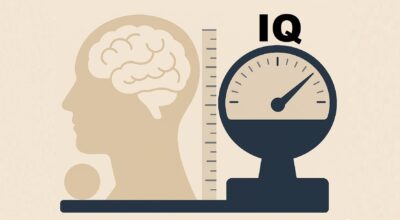Introduction
Imagine sitting down with a pencil and a series of puzzling shapes, numbers, and words laid out before you. You might wonder: Can a single number truly capture how smart I am? This Average IQ Test concept bridges the gap between our internal mental capabilities and a tangible score. By following this guide, you will learn how to take an IQ test, what signs indicate above-average intellect, and why understanding your IQ can be meaningful—all through clear, step-by-step explanations designed for readers everywhere.
Table of contents
- Introduction
- 2. Average IQ Test Fundamentals: What Is IQ?
- 3. IQ Measurement Evolution: How Tests Developed
- 4. Average IQ Test Administration: How to Measure Your IQ
- 5. Average IQ Test Interpretation: What Scores Mean
- 6. Average IQ Test Indicators: Signs You Are Intelligent
- 7. Average IQ Test Resources: Reliable Sources and Further Reading
- Conclusion
- References
2. Average IQ Test Fundamentals: What Is IQ?
2.1 Defining Intelligence and IQ
When we talk about IQ, or Intelligence Quotient, we refer to a numerical estimate of cognitive abilities, encompassing reasoning, problem-solving, language, and spatial awareness. The notion of IQ emerged in the early 1900s, when Alfred Binet designed the first formal assessment to pinpoint schoolchildren needing extra support. Over time, IQ tests evolved to measure a broader array of mental skills. Keep in mind that an IQ score is not a fixed label of who you are; instead, it represents a snapshot of certain cognitive functions at a given moment. Moreover, intelligence can grow and adapt depending on experiences and learning opportunities.
2.2 Historical Evolution of IQ Scores
- 1905: Binet–Simon Scale introduces “mental age” versus chronological age.
- 1916: Stanford–Binet Test, revised by Lewis Terman, coins the term IQ, using the formula:
IQ = (Mental Age ÷ Chronological Age) × 100 - 1955: Wechsler Adult Intelligence Scale (WAIS) shifts to standard scores, centering the average at 100 with a standard deviation of 15, discarding the original ratio method.
- 1980s and beyond: The Flynn Effect documents a steady rise—about 3 IQ points per decade—in population scores, prompting periodic updates to test norms.
Therefore, these refinements aim to improve fairness, reliability, and cultural neutrality.
3. IQ Measurement Evolution: How Tests Developed
3.1 Key IQ Tests and Their Features
- Stanford–Binet Intelligence Scales
- Assesses five domains: fluid reasoning, knowledge, quantitative reasoning, visual-spatial processing, and working memory.
- Applicable from age 2 to 85+, allowing consistent comparison across ages.
- Wechsler Adult Intelligence Scale (WAIS-IV)
- Divided into four indexes: Verbal Comprehension, Perceptual Reasoning, Working Memory, and Processing Speed.
- Generates a Full Scale IQ plus individual index scores.
- Wechsler Intelligence Scale for Children (WISC-V)
- Designed for ages 6 to 16, highlighting academic strengths and areas needing support.
- Raven’s Progressive Matrices
- Nonverbal, pattern-based tasks that minimize language and cultural bias, often used in multicultural settings.
Each test strives for reliability (consistent results over time) and validity (accurately measuring specific cognitive skills). However, no single instrument can capture every facet of human intelligence; professionals sometimes combine different assessments for a more comprehensive view.
3.2 Reliability and Validity of IQ Tests
- Test–Retest Reliability: When you take the same test twice with a few weeks’ gap, your scores usually vary by no more than 5 points.
- Parallel-Form Reliability: Two versions of the same test yield almost identical results.
- Content Validity: Experts agree that test items represent essential cognitive abilities (e.g., vocabulary, reasoning).
- Construct Validity: Statistical analyses (like factor analysis) confirm that a general intelligence factor—often called g—underlies multiple subtests.
- Predictive Validity: IQ scores correlate with academic grades and job performance, though the strength of that link depends on the field.
Hence, modern tests offer a robust estimate of cognitive capacity, even if they cannot encompass every nuance of human intellect.
4. Average IQ Test Administration: How to Measure Your IQ
4.1 Finding the Right Test
- Clarify Your Goal
- Academic Needs: If you’re a student, schools often use WISC to design individualized learning plans.
- Clinical Assessment: Psychologists rely on WAIS to diagnose learning disabilities or cognitive impairments.
- Curiosity or Self-Improvement: Online IQ tests exist, but their accuracy varies widely—interpret results with caution.
- Choose a Qualified Administrator
- Licensed Psychologist: Has formal training to administer, score, and interpret IQ tests correctly.
- Educational Specialist: May administer tests to children in school settings.
- Online Proctor: Some accredited platforms provide live supervision and standardized administration remotely.
4.2 Setting Up a Proper Testing Environment
- Quiet, Distraction-Free Space: Eliminate noise, turn off phones, and minimize interruptions (family members, pets).
- Adequate Lighting: Ensure consistent, even lighting to reduce eye strain and maintain focus.
- Comfortable Seating and Desk: Sit upright at a sturdy table to support good posture, which helps concentration.
- Allowed Materials: Provide pencils, scratch paper, and any permitted calculators—verify with the proctor beforehand.
- Timing and Breaks: Most IQ tests take around 60–90 minutes; brief pauses (e.g., 2–3 minutes between subtests) can help you reset without losing momentum.
4.3 Step-by-Step Testing Process
- Schedule the Appointment
- Contact a testing center or psychologist two to three weeks in advance to confirm availability and any prerequisites.
- Follow Pre-Test Guidelines
- Review Instructions: Read any materials the administrator sends thoroughly.
- Sleep and Nutrition:
- Aim for 7–8 hours of uninterrupted sleep the night before.
- Eat a balanced meal 1–2 hours prior, focusing on protein (e.g., eggs, nuts) and complex carbohydrates (e.g., whole grains).
- During the Test
- Read Each Instruction Carefully: Misinterpreting directions is a common source of error.
- Time Management: If a question is tricky, mark it and move on—return if time allows.
- Stay Relaxed: Use deep breathing or gentle stretching (for a few seconds) to reduce tension.
- After the Test
- Reflect on Your Experience: Note which sections felt straightforward and which felt challenging.
- Avoid Early Judgments: Wait for the official score report before drawing conclusions about your strengths and areas for growth.
4.4 Preparation Tips for Accurate Results
- Practice Sample Items: Focus on understanding the format—images of sample matrices, vocabulary questions, or arithmetic problems—rather than racing to finish.
- Engage in Brain-Training Activities: Dedicate two to three times per week for puzzles like Sudoku or logic games to sharpen reasoning.
- Maintain Healthy Habits:
- Regular Exercise: Aim for 30 minutes of moderate activity, five days a week, to support brain health.
- Adequate Sleep: Consistent rest (seven to eight hours per night) improves memory consolidation and focus.
5. Average IQ Test Interpretation: What Scores Mean
5.1 Understanding Score Distribution
Modern IQ tests use a normal curve (bell-shaped distribution) with:
- Mean (Average): 100
- Standard Deviation: 15
This implies:
- 68% of people score between 85 and 115.
- 95% score between 70 and 130.
In other words, a score near 100 places you in the “average” range. Scores above 130 land you in the top 2% of test-takers, often a qualifier for high-IQ societies.
5.2 Score Categories and Percentiles
| IQ Score Range | Descriptor | Approximate Percentile |
|---|---|---|
| 130+ | Very Superior | 98th percentile or higher |
| 120–129 | Superior | 91st–97th percentile |
| 110–119 | High Average | 76th–90th percentile |
| 90–109 | Average | 25th–75th percentile |
| 80–89 | Low Average | 9th–24th percentile |
| 70–79 | Borderline | 2nd–8th percentile |
| Below 70 | Extremely Low | Below 2nd percentile |
5.3 Factors That Influence Your IQ Score
- Genetic Contribution: Research indicates 50–80% of IQ variability stems from genetics.
- Socioeconomic Environment: Access to quality education and resources can account for a shift of up to 10 points.
- Nutrition and Health During Development: Early childhood deficiencies—iron, iodine—can lead to lasting cognitive effects.
- Test Anxiety: Elevated stress levels may reduce scores by 5–10 points; practicing relaxation techniques helps.
5.4 When to Retest
- Following Major Life Events: If you experience a head injury or neurological treatment, re-evaluation may be necessary.
- Educational Transitions: Moving between school levels (e.g., elementary to middle school) sometimes triggers reassessment.
- Large Discrepancies in Subscores: If your verbal score differs from your performance score by more than 12 points, a psychologist might recommend retesting or additional evaluation to pinpoint strengths and weaknesses.
6. Average IQ Test Indicators: Signs You Are Intelligent
6.1 Behavioral and Cognitive Indicators
- Persistent Curiosity: You frequently explore new topics—history, science, or languages—beyond what’s required.
- Pattern Recognition: You spot connections rapidly, whether in mathematical series or social dynamics. For instance, you might notice a stock’s trend before your peers or quickly solve complex sudoku puzzles.
- Adaptability: You can shift from one challenging task to another (e.g., debugging code then drafting a report) with minimal downtime.
- Proactive Problem-Solving: You identify obstacles (e.g., workflow inefficiencies) and search for solutions without waiting for instructions.
- Clear Communication: You explain complicated information—like a technical process—to someone unfamiliar using simple, relatable terms.
6.2 Everyday Habits of High IQ Individuals
- Diverse Reading Routine:
- They dedicate 30–60 minutes daily to reading across genres—biographies, science articles, or philosophy—broadening their perspectives.
- Reflective Journaling:
- Writing down thoughts, ideas, or problem-solving strategies helps them track patterns and refine their reasoning.
- Structured Goal Setting:
- They break long-term objectives (e.g., completing a certification) into weekly milestones and daily tasks, enhancing focus.
- Short Mindful Breaks:
- Pausing for 5–10 minutes each hour to stretch, breathe, or take a short walk can refresh mental energy.
6.3 Common Myths About Smartness
- Myth: A high IQ guarantees social ease.
- Reality: Social and emotional intelligence (EQ) are distinct; some with high IQs still benefit from practicing interpersonal skills.
- Myth: Your IQ is unchangeable after childhood.
- Reality: Engaging in enriching activities—learning languages, playing strategic games—can boost fluid intelligence by 5–10 points over months or years.
- Myth: Scoring above 130 means guaranteed life success.
- Reality: Factors like motivation, perseverance, network, and luck often play a bigger role in long-term achievements than IQ alone.
7. Average IQ Test Resources: Reliable Sources and Further Reading
7.1 Authoritative Journals and Articles
- Journal of Intelligence
- Open-access volumes cover topics like cross-cultural validity and long-term studies on IQ changes.
- Psychological Assessment
- Publishes peer-reviewed research on test development; abstracts often summarize key findings on reliability and new testing techniques.
- Intelligence (ISIR Official Journal)
- Special issues frequently discuss global IQ trends and the Flynn Effect; some articles are freely accessible.
7.2 Recommended Books and Manuals
- Wechsler Adult Intelligence Scale—Fourth Edition (WAIS-IV) Manual, by David Wechsler (Pearson, 2008)
- Comprehensive instructions for administration, scoring, and interpretation; includes normative data for various age groups.
- Essentials of WAIS-IV Assessment, by Elizabeth O. Lichtenberger & Alan S. Kaufman (John Wiley & Sons, 2012)
- Practical guidance: tips for smooth administration, real-life case examples, and strategies to interpret mixed profiles.
- Stanford–Binet Intelligence Scales: Technical Manual (Fifth Edition, Stanford University Press)
- Details test construction, sample demographics, and reliability coefficients.
7.3 Online Platforms and Tools
- University Psychology Departments
- Many universities offer on-campus testing services at affordable rates, often complete with detailed feedback sessions.
- Professional Associations
- American Psychological Association (APA): Maintains a directory of licensed psychologists who administer IQ tests.
- British Psychological Society (BPS): Offers guidelines to select appropriate assessment tools and find accredited practitioners.
- Open-Source Cognitive Assessment
- Certain educational websites feature free, public-domain sample items to practice; verify their credibility by checking affiliations or user reviews before relying on scores.
Conclusion
Measuring intelligence through an Average IQ Test involves more than answering a set of questions; it requires understanding what IQ represents, choosing the right assessment, preparing thoughtfully, and interpreting scores within context. A standard score around 100 indicates alignment with the majority, while scores above 130 place you among the top 2%. Yet remember, your IQ score is just one data point—your curiosity, adaptability, and problem-solving habits showcase intelligence in everyday life. By following these step-by-step guidelines, you can approach IQ testing with confidence, reduce anxiety, and glean insights into your cognitive strengths. Ultimately, how you leverage your IQ results for learning, career planning, or personal growth defines your path forward.
References
Warning: The provided links lead only to the specified content. Other areas of those sites may contain material that conflicts with some beliefs or ethics. Please view only the intended page.
- Wechsler Adult Intelligence Scale—Fourth Edition (WAIS-IV) Manual
- Official publisher page for administration details, norms, and scoring guidelines.
- https://www.pearsonassessments.com/store/usassessments/en/Store/Professional-Assessments/Personality-&-Biomedical/Wechsler-Adult-Intelligence-Scale-%7C-Fourth-Edition/p/100000392.html
- Essentials of WAIS-IV Assessment by Elizabeth O. Lichtenberger & Alan S. Kaufman (2012)
- Practical guide and case examples explaining WAIS-IV administration and interpretation.
- https://www.wiley.com/en-us/Essentials+of+WAIS+IV+Assessment-p-9780470550725
- Flynn, James R. (1987). “Massive IQ Gains in 14 Nations: What IQ Tests Really Measure.” Psychological Bulletin 101(2), 171–191.
- Foundational study describing the Flynn Effect and cross-national IQ trends.
- https://doi.org/10.1037/0033-2909.101.2.171
- Gottfredson, Linda S. (1997). “Mainstream Science on Intelligence: An Editorial With 52 Signatories, History, and Bibliography.” Intelligence 24(1), 13–23.
- Editorial outlining consensus on intelligence research and test validity.
- https://doi.org/10.1016/S0160-2896(97)90011-8
- International Society for Intelligence Research (ISIR) – Journal of Intelligence (Open-Access Archives)
- Peer-reviewed articles on IQ, cognitive assessment, and longitudinal studies.
- https://www.intellthejournal.com/archive


















